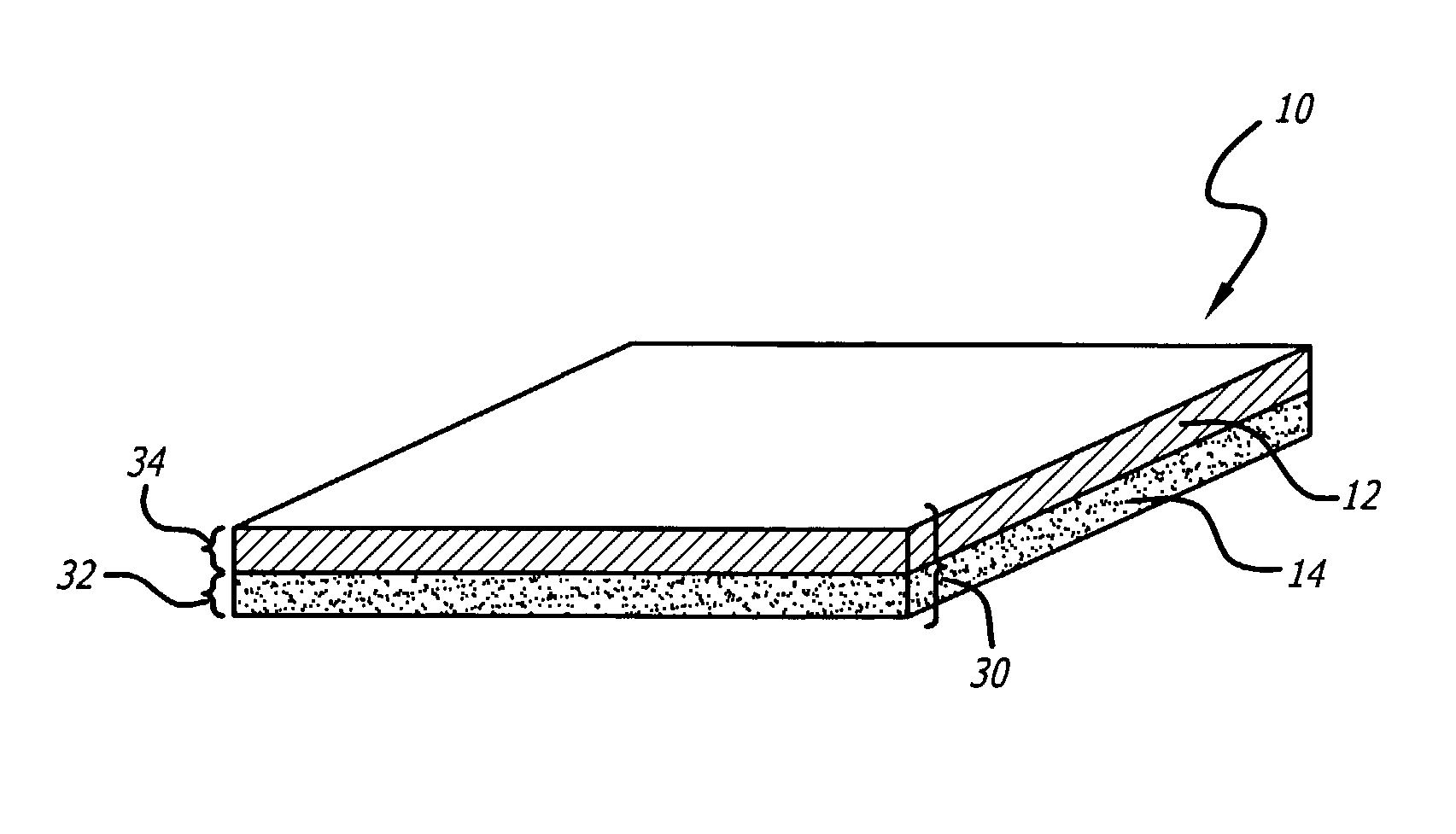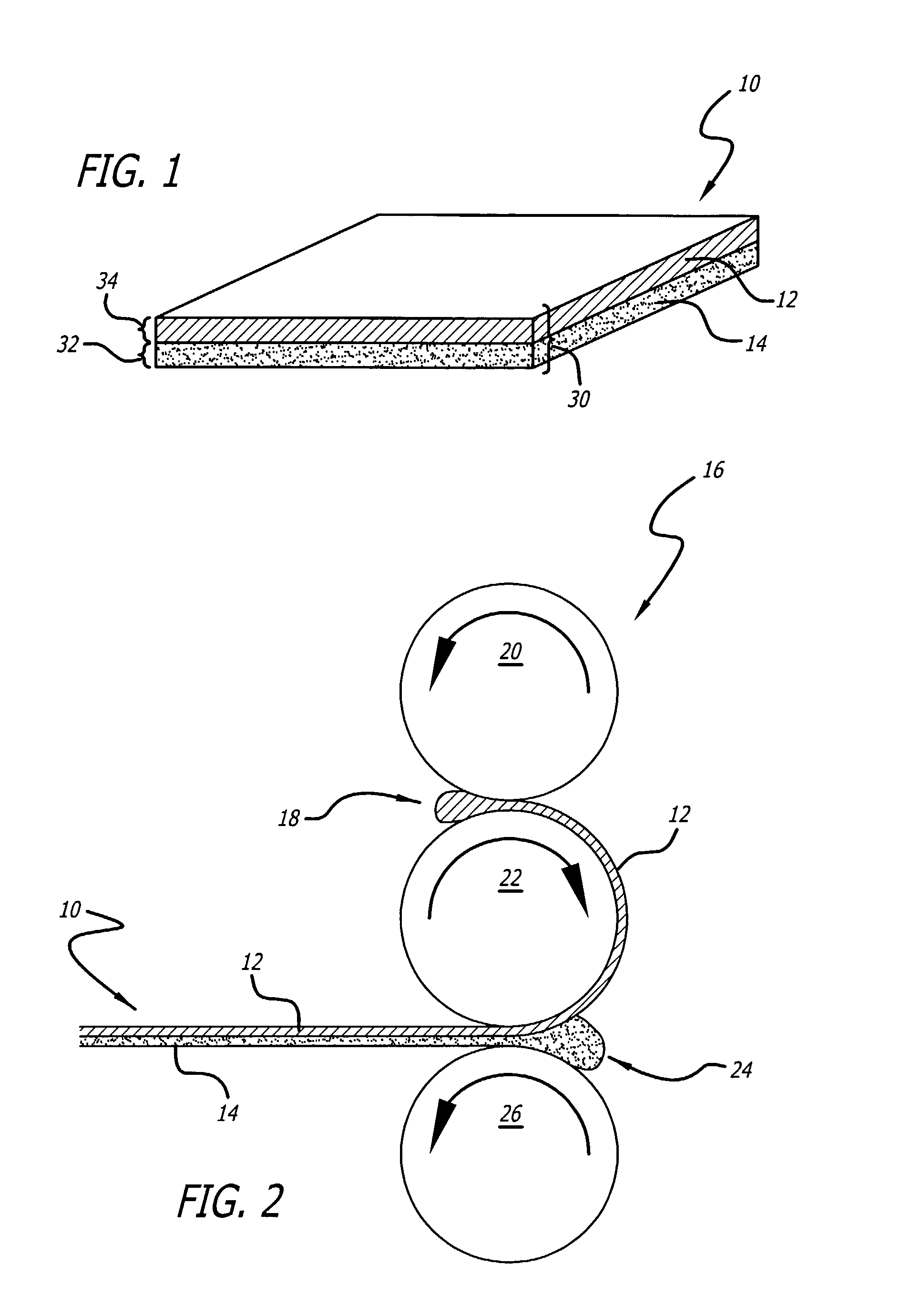Adhesive tape for outdoor use
a technology for adhesive tape and outdoor use, applied in the field of adhesive tape, can solve the problems of high manufacturing cost of acrylic coated adhesive tape, low adhesion performance, and low energy surface substrate adhesion, and achieve excellent initial adhesion, low manufacturing cost, and high resin content.
- Summary
- Abstract
- Description
- Claims
- Application Information
AI Technical Summary
Benefits of technology
Problems solved by technology
Method used
Image
Examples
Embodiment Construction
. An exemplary adhesive composition may have the following formulations, as shown in Table 1. The quantities are expressed in phr (parts per hundred of rubber), as measures used by those skilled in the art:
1TABLE 1 Adhesive Rubber Tackifying Plasti-Sulfur-Donor Compo- Polymer Resins cizer Agents Stabilizers sition (phr) (phr) (phr) (phr) (phr) A EPDM 100 50-250 0-100 0-5 0-5 B EPDM 20-80 50-250 0-100 0-5 0-5 PIB 80-20 C EPDM 20-80 50-250 0-100 0-5 0-5 Butyl 80-20 D EPDM 20-80 50-250 0-100 0-5 0-5 SEBS 80-20
[0039] Tables A and B below represent additional exemplary adhesive formulations. For, instance, Table A is an example of a SEBS formulation and in Table B, an exemplary formulation for an adhesive formulation made in accordance with the teachings of the present invention.
2TABLE A Exemplary formulation of the SEBS adhesive. INGREDIENT PHR WEIGHT % Kraton G1657 35 12 Kraton GRP 6919 30 10 Kraton G1650 35 12 Regalite R91 145 50 Regalite 1018 15 5 Paraflex HT 68 25 10 Irganox B215 1 ...
PUM
| Property | Measurement | Unit |
|---|---|---|
| Fraction | aaaaa | aaaaa |
| Fraction | aaaaa | aaaaa |
| Fraction | aaaaa | aaaaa |
Abstract
Description
Claims
Application Information
 Login to View More
Login to View More - R&D
- Intellectual Property
- Life Sciences
- Materials
- Tech Scout
- Unparalleled Data Quality
- Higher Quality Content
- 60% Fewer Hallucinations
Browse by: Latest US Patents, China's latest patents, Technical Efficacy Thesaurus, Application Domain, Technology Topic, Popular Technical Reports.
© 2025 PatSnap. All rights reserved.Legal|Privacy policy|Modern Slavery Act Transparency Statement|Sitemap|About US| Contact US: help@patsnap.com


